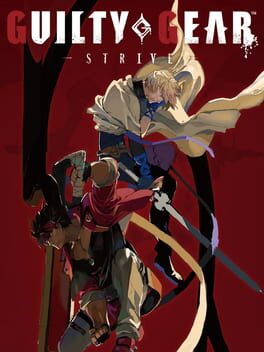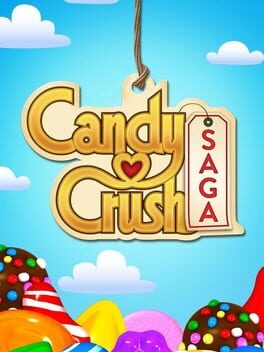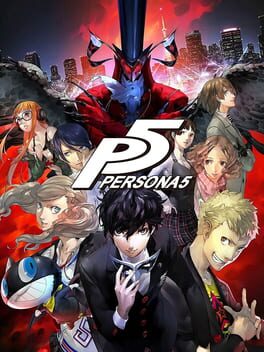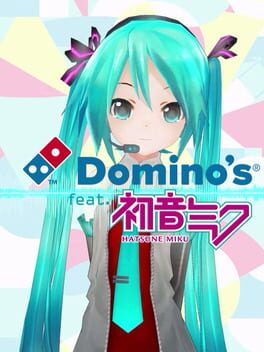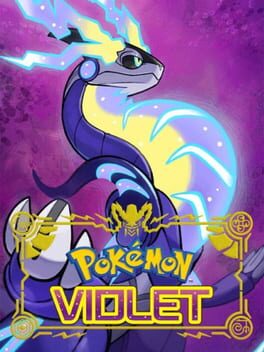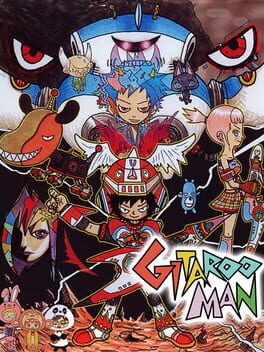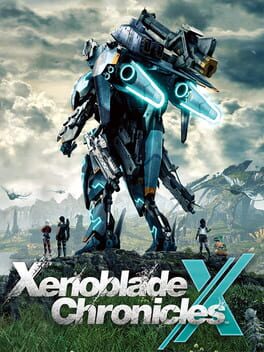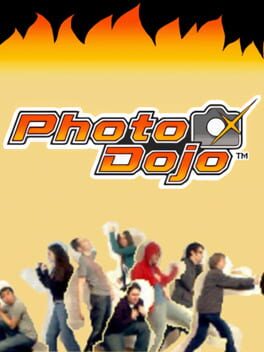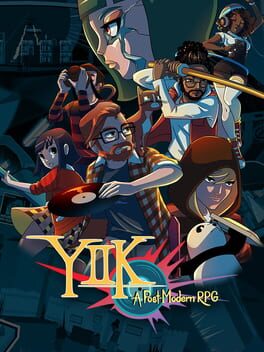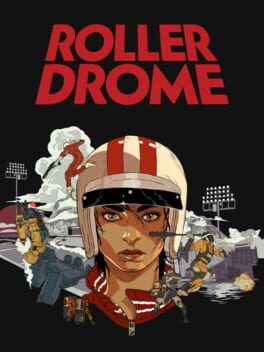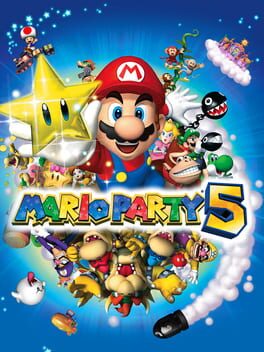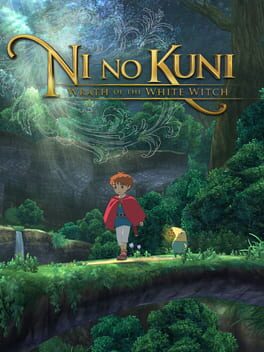Ricecreammm
2021
2012
2022
Splatoon is a game that carries the idea of the rebellious teenager. A bunch of rowdy kids competing in hardball sports, making a mess of familiar places and loitering around the plaza space. Everything from the characters, music, clothing, branding and world were meant to reinforce this idea in Splatoon, back in 2015. Something that always irked me in Splatoon 2 is how it felt like this aesthetic was commodified. Splatoon 2 veers itself into feeling a lot more pro-consumerist, taking the player from Inkopolis Plaza to Inkopolis Square, an area more modern and more filled to the brim with advertising, making the centerpiece a literal tower of screens and billboards of ads. The new idols are multimillionaire pop superstars running a news station with sponsored ads (I’m sorry Pearl and Marina I just gotta prove a point I still love you). Smaller things reinforce this too, like the new stages occupying more professional and commercial spaces, and the UI elements being centered a lot on price tags and the like. I know it’s bizarre to criticize a Nintendo™ game as being too commercial, but compared to what came before it, Splatoon 2 feels a lot less rebellious throughout. It comes across as exemplifying punk and street culture in the same way a TikTok guy pretending to shoot people and say he’s an “alpha male” while dressed head to toe in expensive brand name clothing is punk. It’s not just less rebellious, it’s less intimate and it comes off colder than its predecessor.
Splatoon 3 works to recapture the essence of the series’ embrace of teen counterculture, encompassing itself under the idea of “chaos”. Divorcing itself from the comfortable modernity of Inkopolis, Splatoon 3 sees players off to the rougher, louder, densely packed streets of Splatsville. The Japanese names of these two cityscapes, Haikara City (Inkopolis) and Bankara Town (Splatsville) show this divide, as Haikara is a term used for Western fashion that arose in the late 19th century, implying a sense of high-collar fashion, something new and progressive but still professional in nature. Bankara is a term meant to encompass the reaction against this high-collar Western culture that's made its way through Japan, a way for younger generations to wildly and deliberately rebel from Haikara style.
Though “chaos” is Splatoon 3’s generalized mission statement, it’s shown in a way different from how other media would conceptualize chaos. It’s rougher, it’s dirtier, it’s louder, but it doesn’t ever go out of its way to be meaner. Splatoon 3 has an edge to it, but not one that means to harm. Chaos, in this game, is embraced as a city formed of the people who live in it, the warmth of their community and spirit. The new stages you visit are much less developed than the stages of previous games, consisting of abandoned spillways, desert gorges, and factories. These places find life in how the people of Splatsville have restored them as arenas to continue their sport, and the one outlier to this, Hagglefish Market, is a marketplace filled with individual vendors suspended over the sea with various small structures. Opposed to the previous game’s skyscrapers, concert halls, and hotel resorts filling out Inkopolis, the Splatlands’ new stages are much more humble, and make the turf wars taking place on them feel more home-grown.
Splatfests in Splatoon 3 are shown much less as professional, organized concerts and more as festivals, where the game’s idols go through the streets, each performing music home to the culture they represent, and people are scattered through the streets cheering and dancing. Just roaming the streets during the games previous Splatfest World Premiere gave a much more powerful sense of warmth and excitement than either of the two previous games.
Through the course of Splatoon 2, I was a bit worried about the future of the series. Something that embodied itself and built its identity in its sense of counterculture felt like it was slowly eeking towards a dulled sense of conformity as it made its home in Nintendo’s signature lineup. Even with it's lack of new gameplay innovation and a frankly underwhelming story mode, Splatoon 3 truly impressed me with how much it recaptures and succeeds what the original game set out for, forging its identity as still being something fresh and uniquely set apart from any of its contemporaries. I dread to imagine what a Team Order version of this game would be like.
Splatoon 3 works to recapture the essence of the series’ embrace of teen counterculture, encompassing itself under the idea of “chaos”. Divorcing itself from the comfortable modernity of Inkopolis, Splatoon 3 sees players off to the rougher, louder, densely packed streets of Splatsville. The Japanese names of these two cityscapes, Haikara City (Inkopolis) and Bankara Town (Splatsville) show this divide, as Haikara is a term used for Western fashion that arose in the late 19th century, implying a sense of high-collar fashion, something new and progressive but still professional in nature. Bankara is a term meant to encompass the reaction against this high-collar Western culture that's made its way through Japan, a way for younger generations to wildly and deliberately rebel from Haikara style.
Though “chaos” is Splatoon 3’s generalized mission statement, it’s shown in a way different from how other media would conceptualize chaos. It’s rougher, it’s dirtier, it’s louder, but it doesn’t ever go out of its way to be meaner. Splatoon 3 has an edge to it, but not one that means to harm. Chaos, in this game, is embraced as a city formed of the people who live in it, the warmth of their community and spirit. The new stages you visit are much less developed than the stages of previous games, consisting of abandoned spillways, desert gorges, and factories. These places find life in how the people of Splatsville have restored them as arenas to continue their sport, and the one outlier to this, Hagglefish Market, is a marketplace filled with individual vendors suspended over the sea with various small structures. Opposed to the previous game’s skyscrapers, concert halls, and hotel resorts filling out Inkopolis, the Splatlands’ new stages are much more humble, and make the turf wars taking place on them feel more home-grown.
Splatfests in Splatoon 3 are shown much less as professional, organized concerts and more as festivals, where the game’s idols go through the streets, each performing music home to the culture they represent, and people are scattered through the streets cheering and dancing. Just roaming the streets during the games previous Splatfest World Premiere gave a much more powerful sense of warmth and excitement than either of the two previous games.
Through the course of Splatoon 2, I was a bit worried about the future of the series. Something that embodied itself and built its identity in its sense of counterculture felt like it was slowly eeking towards a dulled sense of conformity as it made its home in Nintendo’s signature lineup. Even with it's lack of new gameplay innovation and a frankly underwhelming story mode, Splatoon 3 truly impressed me with how much it recaptures and succeeds what the original game set out for, forging its identity as still being something fresh and uniquely set apart from any of its contemporaries. I dread to imagine what a Team Order version of this game would be like.
2016
I think that most reviews I see for this game, and much of the discussion around it is prefaced with "I don't really play JRPGs" is very telling. Says nothing meaningful, does nothing meaningful, unless you think it's shallow message that feels equivalent to a "phones are BAD" comic, complete with the most absurd cardboard cutouts of "society's corrupt elite" to topple over and be done with, still has any sort of meaning. It puts up a veneer of teen rebellion and progressiveness but never does anything with it, and in most cases actively works against itself. Persona 5 is the kind of game that tells the player "Did you know creeping on and sexually abusing women is bad?" And then immediately heelturn and dress said target of abuse (who's 16 btw) in a skintight bodysuit with a big boob window, give her a whip, and call her "Panther".
Everything from it's gameplay to it's writing to it's setting has been done before and far, far better. But it sure does look and sound nice so I guess it's good
Everything from it's gameplay to it's writing to it's setting has been done before and far, far better. But it sure does look and sound nice so I guess it's good
2022
"Embarrassing" is the best word for this game. Somewhat in the sense that I felt embarrassed by it's various issues while playing, but moreso in the sense that the people working away at Pokemon Scarlet and Violet must have felt embarrassed putting it out in this state. The skeleton of a much better game is here, and the potential of really good innovation for Pokemon can be seen throughout. This game wanted to and could have been so much more, but Game Freak clearly didn't have the time or know-how to follow through with any of it. It's a real shame.
2001
I've thought a lot about the passion that drives some games to be made. The "soul" behind it, if you will. It's hard to find in the wider gaming space, almost disheartening when stewing through the mountains of shlock motivated primarily by marketing and profit. But, sometimes, you find That kind of game. A game that gets you racing, unable to put it down, always excited for more. A game that holds an emotional depth that touches you deep in a way you'd never expect. A game that is so passionate, so inspired, and made by people who really cared and wanted to make something great, it lights a fire in your heart and inspires you like nothing else in the medium. A game that, in it's short runtime, feels like it was able to really, truly, honestly affect you. Gitaroo Man is That kind of game.
Xenoblade Chronicles X is the shortest Xenoblade game. If you really wanted to, you could blaze through the story content and reach the end in like, 40 hours. That’s less than half the time it took me to finish the recently released Xenoblade Chronicles 3, in fact! But you’re kinda missing the point if you play it that way.
By far Monolith Soft’s biggest and most ambitious project, Xenoblade Chronicles X aims to impress in every way it can. Soaking up every bit of the meek Wii U hardware to create a massive, gorgeous world, nearly bursting with overlaying systems and mechanics, and a wholly indulgent dive into Takahashi’s very not subtle love of Mobile Suit Gundam. This only makes it more surprising when you find that what X is trying to do, what it wants the player to do most, tends to be pretty quiet.
In the same sort of vein as Majora’s Mask, most of this game's interesting story and gameplay content is set to the side. While the giant mecha combat and gunslinging is saved for the story content, the game wholly encourages, even forces you to engage in its abundance of side content, to enrich yourself in the city of NLA and the plight of the people in it. Most of what you do is helping your potential party members and other citizens do some pretty tame stuff that still sheds light on the difficulty humanity has had adjusting to this planet. You’ll help someone in Lao’s squad get a ring for a girl he likes, find Elma enjoying her time playing with a cat, do some trivial electrical repairs, small things like this that give you a better insight into what these people think and feel.
And no matter who you talk to, the events that got you all here never stop weighing heavy on them all. Everything, in one way or another, leads back to Earth. What they used to do, how they enjoyed time off, their families… things they can only grasp at memories of now. Unlike a game like Majora’s Mask, the quiet moments don’t get filled with a dread of oncoming doom, but a sorrow of a doom that’s already passed.
Of course, these quests also get gameplay rewards too! Yay!! Let’s talk about gameplay now! On the surface, the combat system in X feels very similar to its predecessor. Aside from introducing way too many extra eccentricities to make the systems and how to build around them harder to understand, the core of it becomes a lot faster with one thing: the Overdrive system. Overdrive, like a lot of the gameplay systems in X, is really obtuse, not explained well, and given to you way too early to know how to use it, but once you learn it becomes not just the centerpiece of combat, but most of it you’ll do. Overdrive is a state that will drastically improve your attack, resistances, and speed but requires near constant attention to timing and execution; how and when to use the right arts, constantly building and using TP in a frantic dance of destruction, with only perfect precision granting you some of the juiciest damage numbers I’ve ever seen in a game. It takes a ploddingly slow combat loop into one that feels like you’re on a rollercoaster whenever you start. This on top of the expanded options to build your team, a job system that makes it endlessly satisfying to mix and match weaponry to find what will mesh, it’s far and away the best combat Xenoblade will ever see. Just a shame that Skell combat kinda sucks in comparison.
Xenoblade Chronicles X, more than any of the others in the series, is best described by being a single-player MMO. It introduces player creation, weird multiplayer kinda sorta interactions, an “open world” gated by the enemies that will splat you across the pavement if you’re too weak, and most exciting of all, tons upon tons of fetch quests!! While the story bits you get for these are really nice, the constant grinding loop of picking up shit hoping you’ll get the item you want this cycle, sometimes literally waiting for materials to be mined out for you, is what drags this game down so much. Everything I praised and enjoyed was at the expense of hours upon hours of time spent doing what felt like fuck-all, nearly always feeling like I was not enjoying my time doing this but doing it anyways for the sake of whatever story or gameplay reward I’d get. Truly emblematic of the MMO experience. Also, I truly cannot stress enough how much this game piles information and mechanics on you without ever giving you a break to digest any of it. Out of all the Monolith Soft long bad tutorials this game has the longest and the worst of them all.
This game is interesting. In the state Monolith Soft exists in now, we’ll probably never see something as ambitious or perhaps as daring as X again. Perhaps this was the catalyst that caused them to make utterly boring driveling shit from now on. It’s not by any means a fantastic game, and it’s definitely not for everyone, and even 8 years later it feels like the direction it took may still be too much for me to fully grasp as a Xenoblade 1-head; I still didn’t get nearly as much from this now as I still do from that game. But hey, it’s pretty good at the end of the day. Maybe we’ll get a Switch port once they find out how to effectively cut back on all the UI elements.
Also The key we’ve lost is Sawano’s best work.
By far Monolith Soft’s biggest and most ambitious project, Xenoblade Chronicles X aims to impress in every way it can. Soaking up every bit of the meek Wii U hardware to create a massive, gorgeous world, nearly bursting with overlaying systems and mechanics, and a wholly indulgent dive into Takahashi’s very not subtle love of Mobile Suit Gundam. This only makes it more surprising when you find that what X is trying to do, what it wants the player to do most, tends to be pretty quiet.
In the same sort of vein as Majora’s Mask, most of this game's interesting story and gameplay content is set to the side. While the giant mecha combat and gunslinging is saved for the story content, the game wholly encourages, even forces you to engage in its abundance of side content, to enrich yourself in the city of NLA and the plight of the people in it. Most of what you do is helping your potential party members and other citizens do some pretty tame stuff that still sheds light on the difficulty humanity has had adjusting to this planet. You’ll help someone in Lao’s squad get a ring for a girl he likes, find Elma enjoying her time playing with a cat, do some trivial electrical repairs, small things like this that give you a better insight into what these people think and feel.
And no matter who you talk to, the events that got you all here never stop weighing heavy on them all. Everything, in one way or another, leads back to Earth. What they used to do, how they enjoyed time off, their families… things they can only grasp at memories of now. Unlike a game like Majora’s Mask, the quiet moments don’t get filled with a dread of oncoming doom, but a sorrow of a doom that’s already passed.
Of course, these quests also get gameplay rewards too! Yay!! Let’s talk about gameplay now! On the surface, the combat system in X feels very similar to its predecessor. Aside from introducing way too many extra eccentricities to make the systems and how to build around them harder to understand, the core of it becomes a lot faster with one thing: the Overdrive system. Overdrive, like a lot of the gameplay systems in X, is really obtuse, not explained well, and given to you way too early to know how to use it, but once you learn it becomes not just the centerpiece of combat, but most of it you’ll do. Overdrive is a state that will drastically improve your attack, resistances, and speed but requires near constant attention to timing and execution; how and when to use the right arts, constantly building and using TP in a frantic dance of destruction, with only perfect precision granting you some of the juiciest damage numbers I’ve ever seen in a game. It takes a ploddingly slow combat loop into one that feels like you’re on a rollercoaster whenever you start. This on top of the expanded options to build your team, a job system that makes it endlessly satisfying to mix and match weaponry to find what will mesh, it’s far and away the best combat Xenoblade will ever see. Just a shame that Skell combat kinda sucks in comparison.
Xenoblade Chronicles X, more than any of the others in the series, is best described by being a single-player MMO. It introduces player creation, weird multiplayer kinda sorta interactions, an “open world” gated by the enemies that will splat you across the pavement if you’re too weak, and most exciting of all, tons upon tons of fetch quests!! While the story bits you get for these are really nice, the constant grinding loop of picking up shit hoping you’ll get the item you want this cycle, sometimes literally waiting for materials to be mined out for you, is what drags this game down so much. Everything I praised and enjoyed was at the expense of hours upon hours of time spent doing what felt like fuck-all, nearly always feeling like I was not enjoying my time doing this but doing it anyways for the sake of whatever story or gameplay reward I’d get. Truly emblematic of the MMO experience. Also, I truly cannot stress enough how much this game piles information and mechanics on you without ever giving you a break to digest any of it. Out of all the Monolith Soft long bad tutorials this game has the longest and the worst of them all.
This game is interesting. In the state Monolith Soft exists in now, we’ll probably never see something as ambitious or perhaps as daring as X again. Perhaps this was the catalyst that caused them to make utterly boring driveling shit from now on. It’s not by any means a fantastic game, and it’s definitely not for everyone, and even 8 years later it feels like the direction it took may still be too much for me to fully grasp as a Xenoblade 1-head; I still didn’t get nearly as much from this now as I still do from that game. But hey, it’s pretty good at the end of the day. Maybe we’ll get a Switch port once they find out how to effectively cut back on all the UI elements.
Also The key we’ve lost is Sawano’s best work.
2009
YIIK: A Postmodern RPG is a game I’ve felt a personal grudge against ever since it came out. Even back in 2016, I saw previews of what it was and felt excited. It’s style and approach to making a “Mother-inspired RPG” always really interested me. When I played it, however, I quickly realized all it had was taken in every wrong way possible. Everything I was interested in was mangled with, hamfisted, downright unfun. I hated YIIK, and only hated it more when I watched the public reception to it. How could a game I was so excited for, something that felt like I would get a lot out of, be so bad?
The game is still bad. Nothing I say means I think it was any better than I thought it was then. In a way, I almost thought it was worse. The combat feels painfully slow and thoughtless on top of being almost totally unnecessary, the dialogue tends toward being horribly boring, the story goes in places that feel like they contradict what it initially tries to do, the puzzles and dungeons are either horribly uninteresting or frustrating, and there’s a veritable host of annoying bugs I encountered on this playthrough. I gave it one star before I did this playthrough and I still stand by it. But, more personally, I feel like I’ve been able to open myself up to be more receptive to it, and more so the people behind it.
Until now, I had treated YIIK with a vile amount of hatred. I hated the game through and through, and I would speak bad at the creator’s expense. This is par for the course with a lot of people who talk about YIIK, and even if I didn’t intend to, I would tend to catch myself regurgitating that mindset when I spoke on it too. I wholly believed that the creators must have hated the kinds of people who played games like it. That they went in with the intention to make a frustrating, awful game. Over time, my memories of what I played were influenced by the people who trashed it, making an example of it as “the worst of indie games” and then people who never even played it and didn’t want to give it the time of day. But, as I played it, I looked more into the story behind the development of YIIK. I listened to interviews with the brothers who made this game. What I found was that although the game was incompetent, it was made with a true passion and honesty. It was a game tirelessly developed over the better part of a decade, even through the worst in their life. When they got mad at people decrying their game in interviews, I can understand where it comes from. My God, if I worked so hard and put so much of myself behind something just for it to be berated and treated like a laughing stock, I’d be infuriated. What an asshole I was to dismiss everything they worked towards.
YIIK: A Postmodern RPG is a terrible game. What it does is terrible, and what it says is bad on the outset and delivered even worse. What’s the worst part is how much it feels like it’s full of itself. But it is doing something, and it is saying something. It’s something that feels like it was made by a real person instead of just being churned from a factory, even if this kind of person is no one I’d ever want to meet in my life.
Even if it failed miserably, it really tried to make something that felt different and unique to it, and it came from a very honest place. For as bad as it is, I believe a game like YIIK is worth a thousand safe, market-tested, corporate games that are sure to please. I hope these developers learn and grow from their experience with YIIK and their previous work to make something better. I do believe now that they could.
The game is still bad. Nothing I say means I think it was any better than I thought it was then. In a way, I almost thought it was worse. The combat feels painfully slow and thoughtless on top of being almost totally unnecessary, the dialogue tends toward being horribly boring, the story goes in places that feel like they contradict what it initially tries to do, the puzzles and dungeons are either horribly uninteresting or frustrating, and there’s a veritable host of annoying bugs I encountered on this playthrough. I gave it one star before I did this playthrough and I still stand by it. But, more personally, I feel like I’ve been able to open myself up to be more receptive to it, and more so the people behind it.
Until now, I had treated YIIK with a vile amount of hatred. I hated the game through and through, and I would speak bad at the creator’s expense. This is par for the course with a lot of people who talk about YIIK, and even if I didn’t intend to, I would tend to catch myself regurgitating that mindset when I spoke on it too. I wholly believed that the creators must have hated the kinds of people who played games like it. That they went in with the intention to make a frustrating, awful game. Over time, my memories of what I played were influenced by the people who trashed it, making an example of it as “the worst of indie games” and then people who never even played it and didn’t want to give it the time of day. But, as I played it, I looked more into the story behind the development of YIIK. I listened to interviews with the brothers who made this game. What I found was that although the game was incompetent, it was made with a true passion and honesty. It was a game tirelessly developed over the better part of a decade, even through the worst in their life. When they got mad at people decrying their game in interviews, I can understand where it comes from. My God, if I worked so hard and put so much of myself behind something just for it to be berated and treated like a laughing stock, I’d be infuriated. What an asshole I was to dismiss everything they worked towards.
YIIK: A Postmodern RPG is a terrible game. What it does is terrible, and what it says is bad on the outset and delivered even worse. What’s the worst part is how much it feels like it’s full of itself. But it is doing something, and it is saying something. It’s something that feels like it was made by a real person instead of just being churned from a factory, even if this kind of person is no one I’d ever want to meet in my life.
Even if it failed miserably, it really tried to make something that felt different and unique to it, and it came from a very honest place. For as bad as it is, I believe a game like YIIK is worth a thousand safe, market-tested, corporate games that are sure to please. I hope these developers learn and grow from their experience with YIIK and their previous work to make something better. I do believe now that they could.
2022
Rollerdrome is a game that’s very easy to give an elevator pitch to; Third person shooter meets skating game. Usually things like this tend to turn me away from games, but Rollerdrome’s striking sense of style and high-octane gameplay merging the two disparate genres with grace made me willing to try it. I’m glad I did! The shooting is less important than the movement, as you barely need to aim with how the lock-on and bullet time systems work, but with the speed and pace you blast through the levels it’s far better than really having to take the time to aim. The movement and trick system plays back into the shooting; tricks don’t just increase your score but refill your ammo depending on how long you hold them and how much you mix up what you do. I constantly found myself making tiny pathing decisions, hitting ramps or grinds from a specific angle or direction so I can get the biggest refill in one shot. The score multiplier gets increased whenever you kill an enemy, further incentivising you to rush from point to point, constantly swapping from making tricks to blowing up goons until it brings you into a zen-like state of quick action. Although it’s hard to get into how this game works, it pays off in a great arcade-style shooter experience that’s incredibly rewarding to get better at and aim for the highest scores you can.
2003
Really, really disappointed by this one. What started out as a fun romp reminiscent of Ghibli's classic films in it's presentation, honesty and heart slowly devolves into a chore of a game where very little happens and what does happen is never really of note. It's shockingly similar to the Dragon Quest series to the point of feeling like a knockoff, pulling the series' signature wit, charm, and rich world and only to muster up something that pales in comparison. A game like this, something that pulls the beauty and heart of Ghibli's work and the charming wit and tight writing of a Dragon Quest title, is something I could truly see myself loving, and that's why I'm hesitant to abandon it altogether, but what's come out of this blend feels far, far lesser than the sum of its parts. If you want what this game sells, any Ghibli movie or Dragon Quest game will give you a far fuller experience.
It is beautiful, though! The way this very recognizable style translates into 3D feels almost seamless at points, and the hand-animated cutscenes are all a delight to watch. That's the best part of the game by far, but sadly gets buried under everything else it clearly lacks in.
It is beautiful, though! The way this very recognizable style translates into 3D feels almost seamless at points, and the hand-animated cutscenes are all a delight to watch. That's the best part of the game by far, but sadly gets buried under everything else it clearly lacks in.
